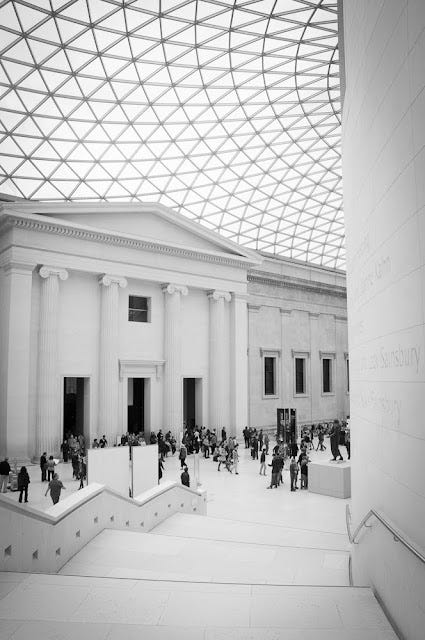The Barbell Method of Reading
Are you going to go fast with your reading? Or do you prefer to go deep? Get the best of both!
“Reading without thinking will confuse you. Thinking without reading will place you in danger” - Confucius
This is the Macmillan library, the oldest library in Nairobi. It was opened in 1931.
I have an exceedingly bad memory. I like to joke that my memory does not discriminate: I can forget your name, face and details regardless of your age, color, origin or gender. And it is not limited to forgetting names and faces. I can read entire books and not even remember whether I read the book or not. On more than one occasion I have reread a book in it's entirety only to realise towards the end that I have actually read it before.
In the last few years, as I have rediscovered my love of reading, I have also had a revelation. Of course when reading fiction, being forgetful is really an advantage. I can read a book that I enjoy multiple times and enjoy the surprise twists each time. However, as I have started to read more non-fiction it becomes a bit pointless to read if I am going to instantly forget.
We usually read because we want some benefit. It might be purely entertainment, but it may also be useful insights, new big ideas, surprises, metaphorical meat that we can sink our mental teeth into and grapple with this new thought.
As I was researching one of my new discoveries (the Zettelkasten - more on this in a future post), I serendipitously came across an article on the 'Barbell' method of reading, and it has kind of revolutionized how I read.
The reading room in the British museum
What is the Barbell Method?
Essentially, the best way to read and remember is to separate two functions of reading. The first function is just getting raw information in front of our eyes. The best way to do this is to read as fast as we can and as much as we can. Of course, this does not guarantee that we will remember or be able to put this information to use. Which brings us to the second function.
The second function is to process the information. This means understanding it, putting into our own words, thinking about how we can apply it in our own lives. The second function is the more important one, but it is also very time intensive, so we don't want to waste it on material that is irrelevant to ourselves. And this is where the barbell method comes in.
More British Museum reading room. It was built in 1857 in the middle of this rather fabulous covered courtyard.
How does it work?
First of all we read the material as fast as we can. We do not have to slow down to think about what we are reading or to take notes or any other form of processing. When we hit a passage that looks like it might be useful to us, we simply highlight or mark it in some way. I usually am reading electronically so I copy and paste the passage into a temporary note. A highlighter on a physical book works just as well. Or if the book is not yours, a photo of the page can also work.
Once we finish the book, now we go back and address our notes. We can now process the information, and we are taking our time with this step. It is helpful at this point to have some kind of notetaking system. Rewrite the notable passages in your own words. Think about how to apply them in your own life. Make drawings, mind maps, charts - whatever it will take to get the thought of the author into your own mind.
Processing might even involve further reading or research. It might involve looking for source texts or studies and going through these. The result of your processing may even to come to a different conclusion than the author!
Some books might have few or even no sections marked to process. Books that are dense with ideas might take considerable time to process. And this is how it should be. We do not devote the same time, attention and effort to a packet of crisps as we do to a six course meal in a fancy restaurant. The quality of the book will determine the amount of effort and time we invest in processing it.
TLDR: Too long didn't read?
The main points: Read a book once rapidly, highlighting the sections that might be useful to you. Read the highlights a second time: this time slowly and with intention to process the material. Process by rewriting the main points in your own words, make drawings, charts, mind maps. Do additional research if the idea is new or of great interest to you. Talk about it with your friends. This second step will make it part of you, and allow you to make use of it in your life.





